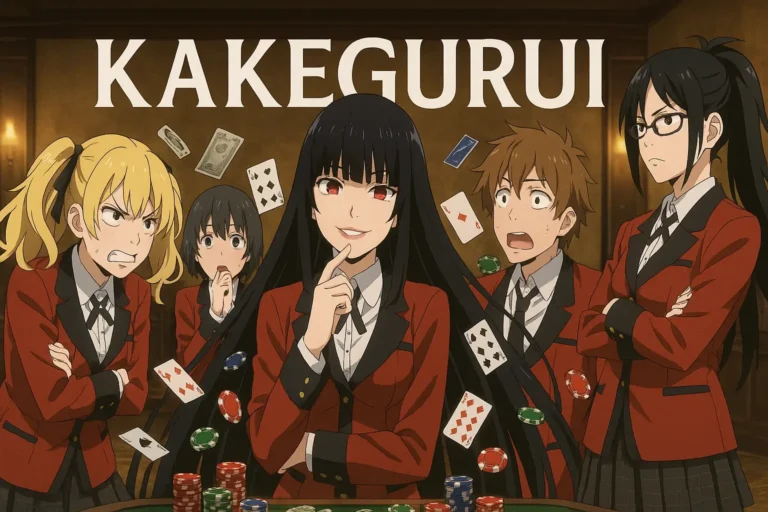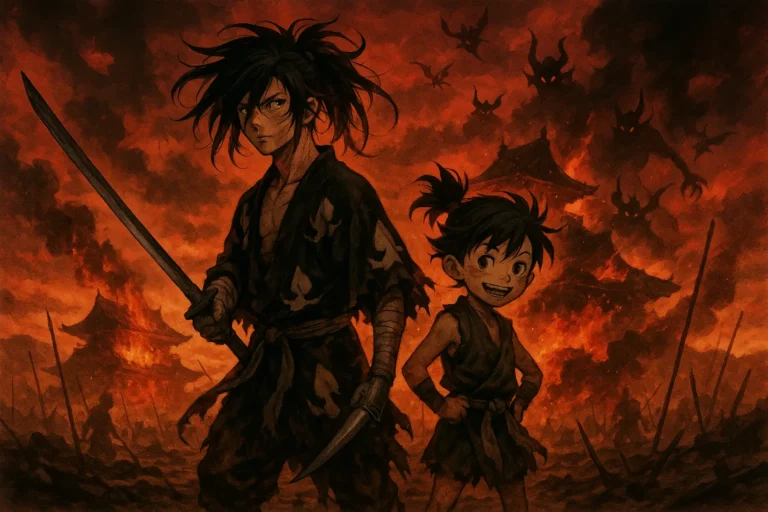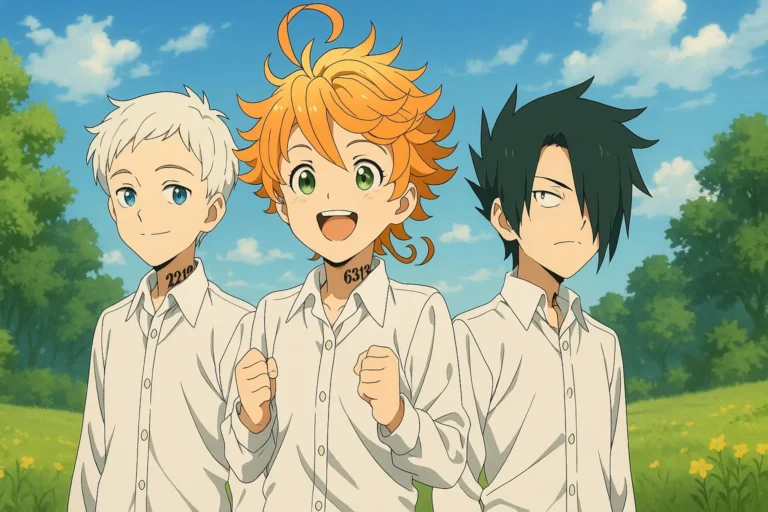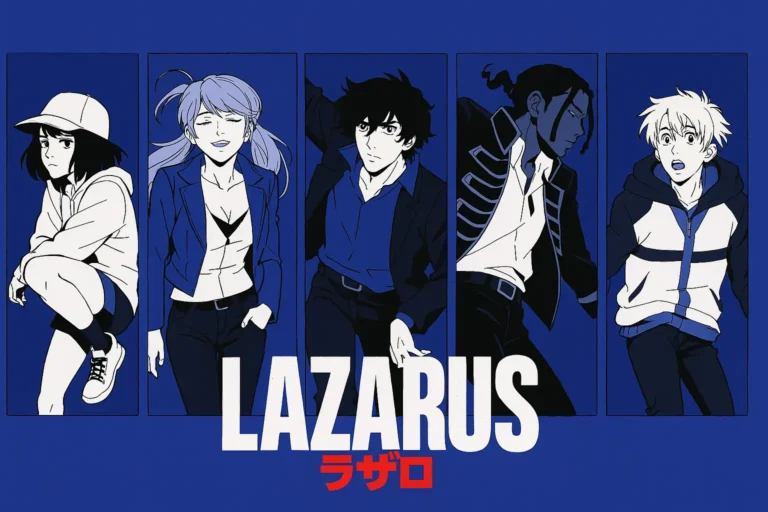Paranoia Agent 2004: The Underrated Anime Masterpiece
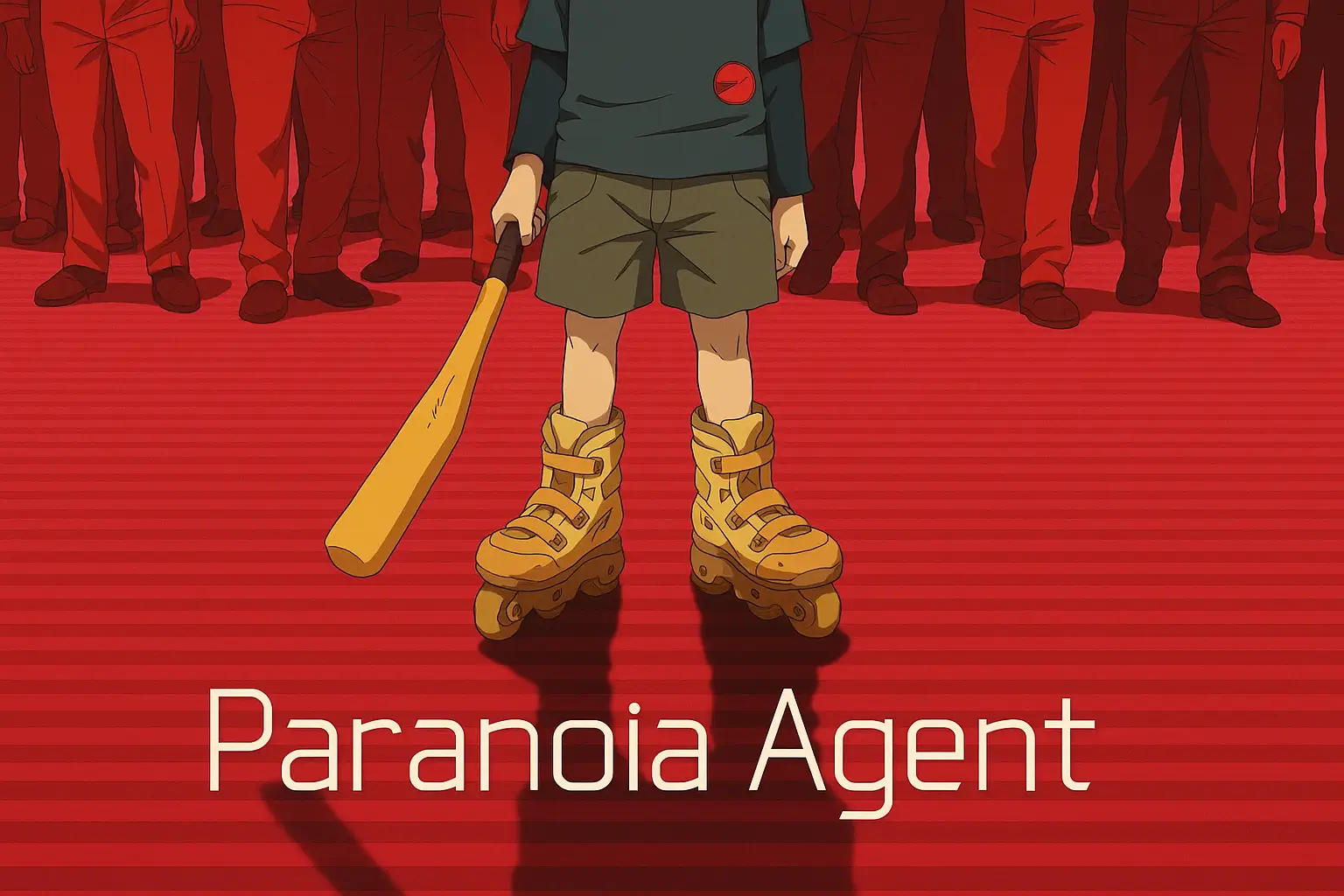
Table of Contents
The Psychological Nightmare Begins
In the bustling metropolis of Tokyo, an unusual series of assaults begins to terrorize the city. The perpetrator? A mysterious golden-haired boy on rollerblades wielding a bent golden baseball bat, known only as “Lil’ Slugger” (Shōnen Bat). What starts as seemingly random attacks gradually reveals itself as something far more sinister and psychologically complex. Created by the legendary Satoshi Kon, this underrated anime delves into the collective anxiety of modern Japanese society, exploring how stress, paranoia, and urban legends can manifest in shocking ways.
As the victims pile up, two detectives—Keiichi Ikari and Mitsuhiro Maniwa—attempt to track down this elusive assailant, only to discover that the truth behind Lil’ Slugger may be far more disturbing than they initially imagined. Each episode focuses on a different character whose life is spiraling out of control before they become Lil’ Slugger’s next target, creating an anthology-like structure that gradually weaves together into a cohesive and mind-bending narrative. Without revealing too much, this underrated anime masterpiece will leave you questioning reality long after the final episode.
Quick Facts
| Category | Details |
|---|---|
| Genre | Psychological thriller, Mystery, Horror, Satire |
| Episodes | 13 |
| Episode Duration | 22 minutes |
| Age Rating | R – 17+ (Violence & Profanity) |
| Production | Madhouse (2004) |
| Source Material | Original work |
| Available On | Funimation, Amazon Prime (availability varies by region) |
Content Advisory Rating (CAT)
Violence: Medium-High – Features assault scenes, suicide themes, and psychological violence. While not excessively graphic, the impact of violence is intensified by the psychological context.
Language: Medium – Contains occasional strong language and profanity, particularly during intense emotional scenes.
Sexual Content: Low – Minimal sexual content, though there are some references and themes related to sexuality in certain episodes.
Sensitive Themes: The series contains depictions of or references to:
- Suicide and suicidal ideation
- Mental illness and psychological breakdown
- Social isolation and bullying
- Child abuse (implied rather than shown)
- Mass hysteria and paranoia
- Identity crisis and dissociation
Parents and sensitive viewers should be aware that Paranoia Agent, though an underrated anime masterpiece, deals with mature psychological themes that may be disturbing despite its animated format.
A Deeper Look: Society’s Collective Nightmare
Paranoia Agent isn’t just an underrated anime; it’s a profound meditation on the human condition in modern society. The series explores how we create external threats and scapegoats to escape our personal responsibilities and inner demons. Lil’ Slugger becomes both salvation and punishment—a physical manifestation of mass hysteria and shared delusion that provides temporary relief from unbearable pressure.
Satoshi Kon, known for his ability to blur the lines between reality and fantasy, crafts a narrative that functions as both social commentary and psychological horror. The anime serves as a mirror reflecting our own anxieties, obsessions, and the ways we escape from truth through self-deception. Through its surrealist imagery and nonlinear storytelling, this underrated anime captures the fragmentation of identity and reality in contemporary urban life, making it as philosophically rich as it is visually striking.
What Makes Paranoia Agent Stand Out
Satoshi Kon’s Distinctive Visual Style
The late director’s signature style shines throughout the series with seamless transitions between reality and hallucination. The animation quality is exceptional, particularly in scenes where characters’ perceptions warp and transform. Kon’s attention to subtle facial expressions and body language adds layers of meaning that reward attentive viewers of this tragically underrated anime.
Psychological Depth and Character Development
Each character in Paranoia Agent is psychologically complex and deeply human. From the character designer struggling with success to the elderly man seeking connection in a changing world, the series treats each perspective with nuance and empathy. The way each character’s inner world manifests visually makes this underrated anime particularly powerful at showing rather than telling their psychological states.
Brilliant Social Commentary
Few anime series tackle social issues with the sophistication found in Paranoia Agent. The show critiques everything from celebrity worship and consumerism to the pressure to conform in Japanese society. One particularly memorable episode satirizes online culture and how people construct false identities—remarkably prescient for an anime produced in 2004, which partly explains why it remains an underrated anime even today.
Unparalleled Sound Design
The series features an unsettling soundtrack that perfectly complements its psychological horror elements. The opening theme, with its inexplicable laughing characters set against apocalyptic backgrounds, immediately establishes the show’s uncanny tone. Sound effects are used strategically to blur the line between objective reality and subjective perception.
Anthology Structure With a Unified Vision
While each episode could almost stand alone as a short psychological thriller, the way the stories gradually interweave creates a satisfying and complex narrative tapestry. This structure allows the underrated anime to explore various aspects of society while building toward a cohesive and powerful conclusion.
Where Paranoia Agent Falls Short
Deliberately Ambiguous Ending
Some viewers may find the conclusion unsatisfying or excessively ambiguous. The series refuses to provide easy answers, which aligns with its themes but might frustrate those seeking narrative closure. Even among fans of this underrated anime, the ending remains divisive and open to multiple interpretations.
Potentially Disturbing Content
Paranoia Agent doesn’t shy away from dark subject matter including suicide, mental illness, and violence. While these elements serve the narrative, they can make the series difficult to watch for some viewers. The psychological horror aspects can be genuinely unsettling in ways that go beyond typical anime content.
Uneven Pacing in Middle Episodes
While most episodes are tightly constructed, a few in the middle section of the series may feel like detours from the main narrative. These episodes still contribute thematically but can disrupt the momentum for viewers eager to return to the central mystery of this otherwise excellently paced underrated anime.
Who Should Watch Paranoia Agent
This underrated anime is perfect for:
- Fans of psychological thrillers and mind-bending narratives like “Perfect Blue” or “Serial Experiments Lain”
- Viewers who appreciate social commentary and satire in their entertainment
- Those interested in exploring themes of mass hysteria, scapegoating, and social pressure
- Animation enthusiasts who value artistic direction and visual storytelling
- Mature anime viewers seeking complex, adult-oriented themes beyond typical genre conventions
Paranoia Agent is probably not for you if:
- You prefer straightforward, action-driven stories with clear resolutions
- You’re sensitive to depictions of mental illness, suicide, or psychological distress
- You’re looking for a light-hearted viewing experience
- You dislike narratives that require significant viewer interpretation
Final Rating: 9.2/10
Paranoia Agent earns this high score for its innovative storytelling, psychological depth, and artistic excellence. Despite being an underrated anime that never achieved mainstream popularity, it represents one of the medium’s finest achievements in psychological horror and social commentary. Satoshi Kon’s vision is fully realized in this series, creating something that transcends typical genre classifications.
This underrated anime masterpiece remains as relevant today as when it first aired, perhaps even more so in our era of viral stories, media influence, and collective anxiety. If you’re willing to engage with challenging material that will make you think long after watching, Paranoia Agent absolutely deserves your attention.
Frequently Asked Questions
Is Paranoia Agent connected to Satoshi Kon’s other works?
While not directly connected in terms of story, Paranoia Agent shares thematic and stylistic elements with Kon’s films like “Perfect Blue” and “Paprika.” Many consider it an extension of his exploration of reality, identity, and media influence that makes his work so distinctive among underrated anime creators.
Do I need to understand Japanese culture to appreciate Paranoia Agent?
While some cultural context enriches the experience, the themes of Paranoia Agent are universal. The series explores human psychology and social dynamics in ways that transcend cultural boundaries, which is why it’s particularly tragic that it remains an underrated anime internationally.
Is there a “correct” interpretation of the ending?
There is no single authorized interpretation of the ending. Kon intentionally created a conclusion that supports multiple readings, encouraging viewers to find meaning based on their own understanding of the series’ themes. This complexity is part of what makes it a fascinating but underrated anime worth discussing.
How violent is Paranoia Agent actually?
The violence in Paranoia Agent is more psychological than graphic. While there are scenes of physical assault and disturbing imagery, the series focuses more on the threat and aftermath of violence rather than explicit depictions. The horror comes primarily from psychological elements.
Why is Paranoia Agent considered underrated?
Despite critical acclaim, Paranoia Agent never achieved the mainstream success of other anime series from the same period. Its challenging themes, psychological complexity, and unconventional narrative structure made it less accessible than more straightforward anime, leading to its status as a cult classic rather than a commercial hit.

